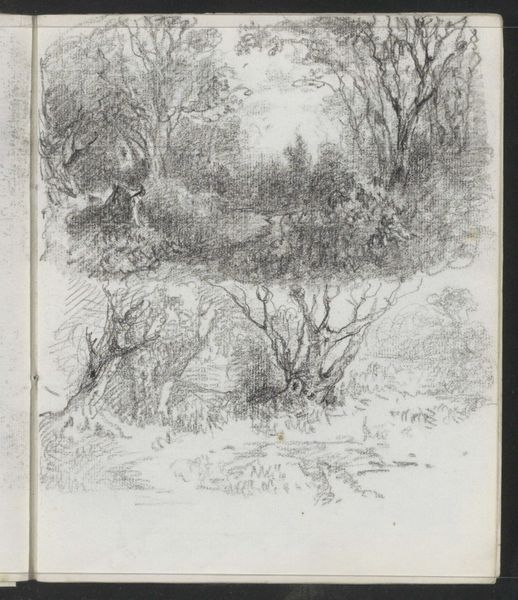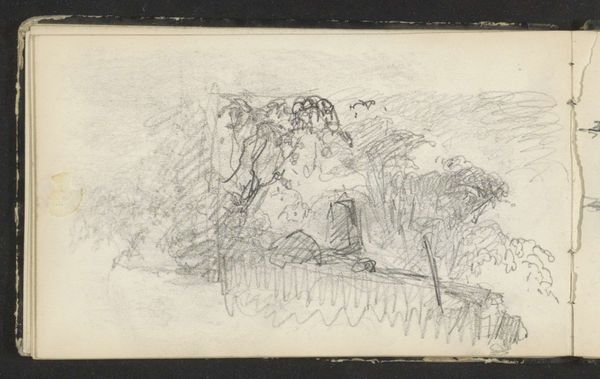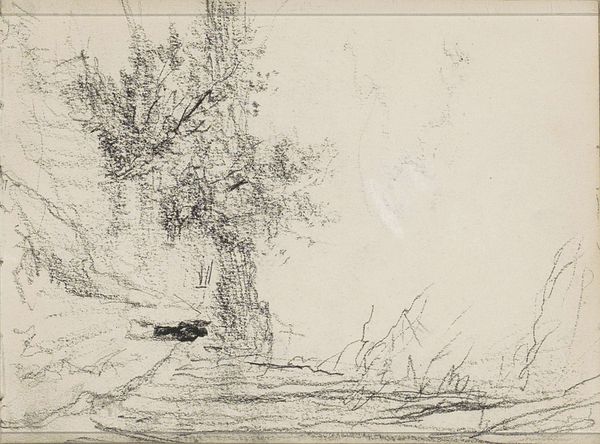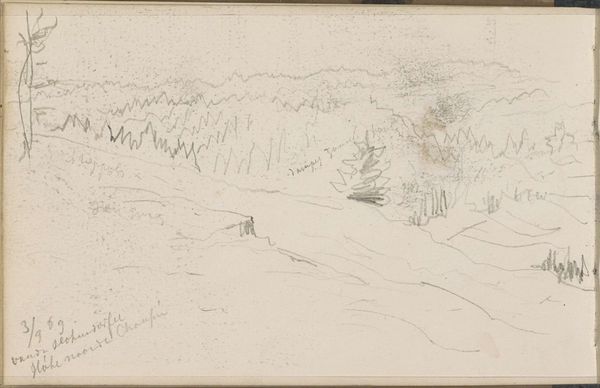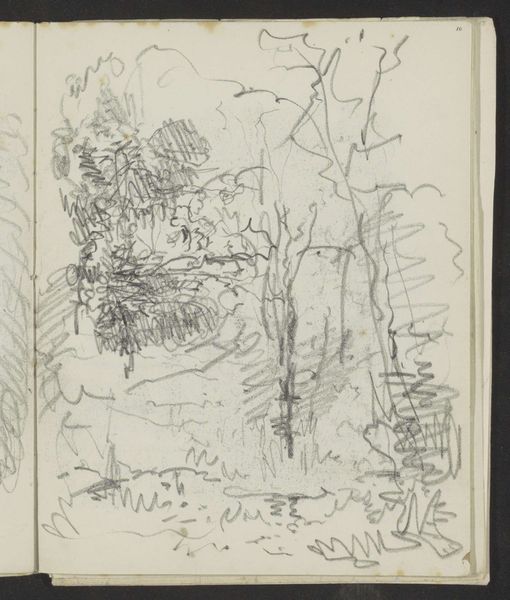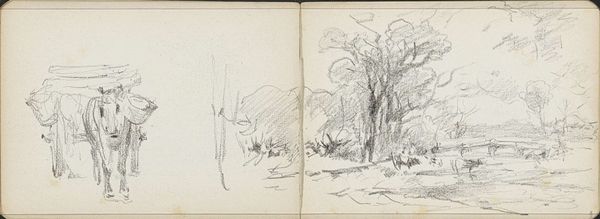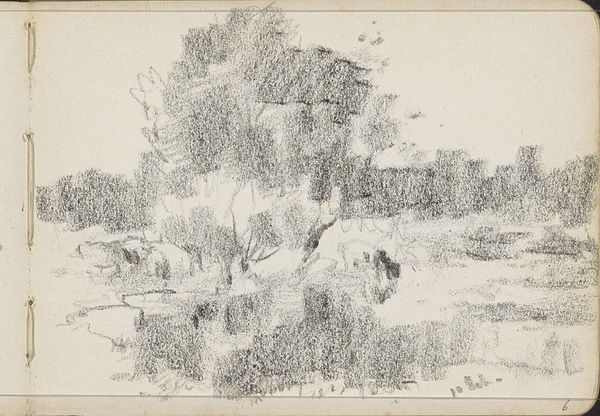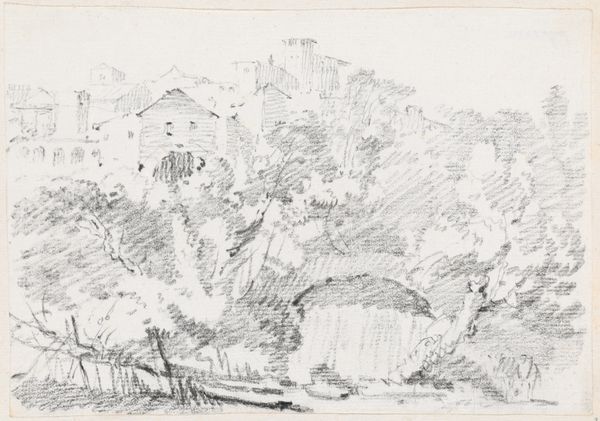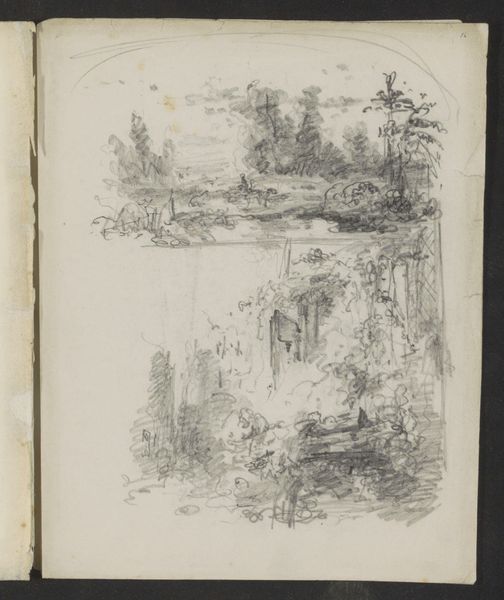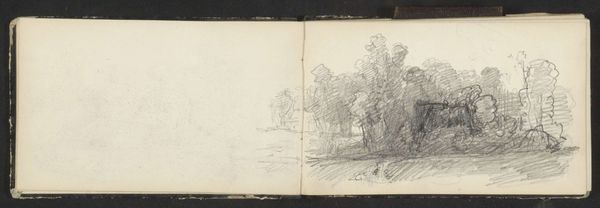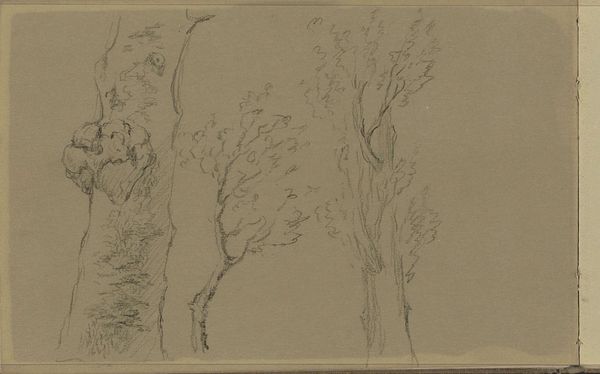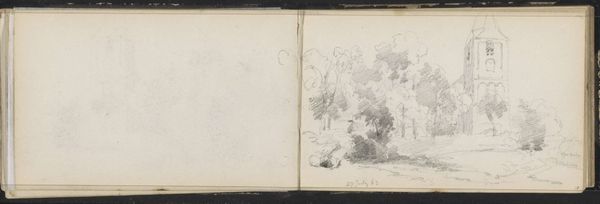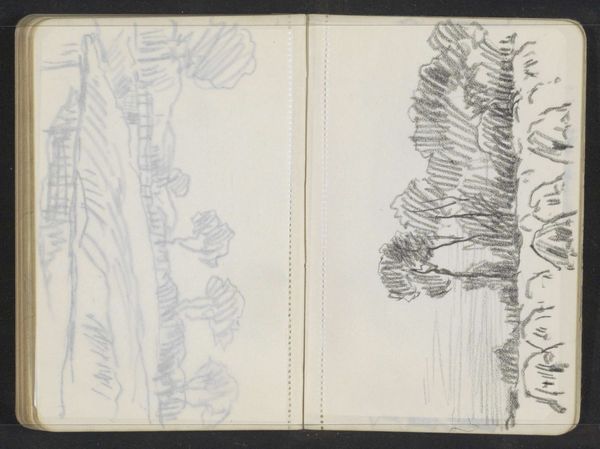
drawing, pencil
#
drawing
#
pen sketch
#
sketch book
#
incomplete sketchy
#
hand drawn type
#
landscape
#
personal sketchbook
#
sketchwork
#
pen-ink sketch
#
pencil
#
sketchbook drawing
#
sketchbook art
#
realism
#
initial sketch
Copyright: Rijks Museum: Open Domain
Editor: This is "Landschap met bomen," or "Landscape with Trees," attributed to Maria Vos, dating sometime between 1834 and 1906. It's a delicate drawing done with pencil and pen, part of the Rijksmuseum collection. I’m struck by its sketch-like quality. It feels very intimate, like a page from a personal sketchbook. What can you tell me about this work? Curator: Looking at this landscape sketch by Maria Vos, I'm particularly interested in how it reflects the changing role of women artists during that period. How might Vos's position in society affect her approach to landscape art, traditionally a very masculine domain? Editor: That’s a great question. It definitely feels different than, say, a bombastic Courbet landscape. Much more subtle. Almost hesitant. Curator: Exactly. Vos, and other women artists, often found themselves excluded from formal art institutions and patronage networks. A sketchbook provides freedom outside those limitations. So, this seemingly simple sketch carries political weight – it's an act of observation, a claim to seeing and representing the world from her perspective. Think about how that intimate, domestic space becomes a site of artistic production. Editor: So the choice of something small and personal, like a landscape sketch, could be seen as both a necessity, due to limitations placed on women, but also a kind of statement in itself? Curator: Precisely. The art world had different expectations for female artists. Do you think this sketch is striving for public acceptance or carving out a separate artistic sphere? Editor: Carving out a separate sphere seems more accurate. There is a rawness, or honesty, in its incomplete nature. Curator: Indeed. It reminds us that art isn't always about grand pronouncements; sometimes it's about quiet observations and subtle acts of self-assertion. It's easy to overlook the significance of such "minor" works, but they reveal much about the complex social and cultural dynamics of their time. Editor: I’ll definitely remember that when I am writing about women artists. Thanks so much!
Comments
No comments
Be the first to comment and join the conversation on the ultimate creative platform.
